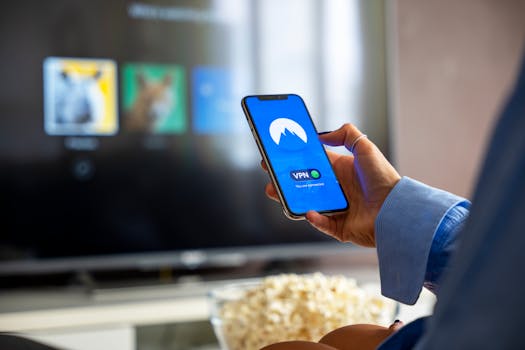Wellness
Nutrition Tracking Apps That Make Healthy Eating Easier
Find out how nutrition tracking apps simplify meal logs, boost motivation, and support healthy eating routines. Explore clear steps, checklists, and digital tools for lasting wellness changes in this friendly guide.
Advertisement
You’ll see food intake differently after logging meals with nutrition tracking apps. These tools scan, count, and present the information in a way that helps you take action right away.
There’s relief in seeing numbers clearly. When nutrition tracking apps break down your meals by protein, carbs, and fats, the guesswork fades. You start knowing what works for your energy and goals.
Capturing Your First Day: Start with Familiar Foods for Consistency
Picture a scenario where someone downloads an app, sets up their profile, and logs breakfast: oatmeal with berries, coffee with a splash of milk. Tracking familiar meals helps set a steady baseline.
This first snapshot is like checking a weather report before heading out. It focuses your attention, making your existing eating habits visible and giving you a clear reference for changes.
Concrete step: Log three meals as you’d eat them normally, without altering the portions or ingredients at first. Use your app’s barcode scanner or voice feature to save time.
Spotting Trends: Build Small Wins with Daily Patterns
After a week, glance at your app’s trend or summary feature. Instead of feeling judged, look for recurring strengths, like consistently hitting protein targets or eating veggies at dinner.
Highlighting positive patterns motivates change more than focusing on what’s “wrong.” For example, seeing three green checks for hydration in your app can nudge you to add one more glass a day.
Rule: Let your app’s wins lead you. When you spot consistent success in one area—say, high fiber lunches—use the feeling of progress to build another healthy habit the following week.
| App Feature | What It Tells You | How It Helps | Action To Take |
|---|---|---|---|
| Macro Breakdown | Grams of protein, carbs, fat | See food balance instantly | Adjust next meal up/down on specific macros |
| Custom Goals | Set calorie or nutrient targets | Personalizes your intake plan | Refine totals weekly to fit your goal |
| Barcode Scanner | Instant package entry | Saves time logging snacks | Use scanner for busy days or new items |
| Photo Logging | Add images instead of text | Visual food tracking, less typing | Snap meal photos when short on time |
| Meal Reminders | Sends prompts to log food | Prevents missed entries | Set nudges for breakfast and dinner |
Personalized Food Insights: Creating Sustainable Meal Routines
Nutrition tracking apps let you move beyond lists and calories to understand patterns in energy, mood, and cravings, leading to meal routines tailored to what truly works for you.
This process creates steady routines so daily eating isn’t a guessing game. Apps connect food intake with how you feel, using simple prompts and reminders that reinforce small wins.
Setting Real-Life Goals: Anchor Progress in Specific Behaviors
When setting up your app, choose easy, behavior-based goals instead of abstract targets. Tap “eat vegetables at lunch” rather than “eat healthier”—because the former can be tracked and adapted based on feedback.
Script: “This week, I’ll log at least one vegetable at lunch every weekday.” Your nutrition tracking apps will make it obvious if you’re on track, and prompt you to add those foods as habits.
- Log meals at the same time daily to create consistency, using reminders from your app.
- Review your food summary each week to notice which meals gave you stable energy.
- Adjust portion size based on app feedback about fullness or energy, not just calories alone.
- Bookmark foods that left you satisfied—then add them to a rotating meal plan.
- Celebrate streaks in your app for healthy choices, reinforcing motivation with visible progress.
Scripting concrete actions makes meal planning less overwhelming and much more sustainable over time. Choose a goal for the next week and set a daily reminder in your app.
Building Habits with Smart Notifications
Nutritional tracking apps often prompt users with reminders right when meal decisions matter most. For example, a 10-minute nudge before lunch can prompt you to add a vegetable or swap a soda for water.
- Respond to app reminders immediately to reinforce your new routine and avoid missing entries.
- Archive reminders that never match your schedule, keeping only relevant ones. This prevents “prompt fatigue” and supports focus on the most important actions.
- Link app notifications to daily cues—such as prepping lunch after a work meeting or finishing dinner before an evening walk. Use this pairing to lock in the habit.
- Adjust reminder times as your schedule evolves, using the app’s settings to match new routines or activities.
- If a notification feels unhelpful, turn it off rather than ignore it. This keeps your nutrition tracking experience supportive, not stressful.
When you treat these digital nudges as partners rather than nags, behavior change becomes more manageable over weeks and months.
Freeing Up Mental Bandwidth: Reducing Decision Fatigue Around Meals
Nutrition tracking apps streamline food choices, so you spend less time worrying about “what’s right” and more time acting confidently. The result is less stress before meals and when shopping for groceries.
Routines Over Willpower: Designing a Shortcut to Healthy Eating
People who use nutrition tracking apps consistently notice that healthy options become their default. Logging food turns a vague intention (“I’ll eat better today”) into a specific pattern.
Example: You decide each Sunday to pre-log your weekday breakfasts—Greek yogurt, whole-grain toast, banana. During the week, you simply follow the plan and check it off, using less mental energy at each meal.
The shortcut: Pre-fill tomorrow’s meals the night before in your app. This relieves morning decision pressure and builds a reliable morning routine.
Grocery Shopping with Precision: Linking Lists to Your Nutrient Targets
Instead of wandering grocery aisles guessing about healthy options, you copy your high-protein lunch salads and fruit snacks from your app to a shopping list. This direct transfer prevents impulse purchases.
Scenario: “I see I need more leafy greens for my lunches this week. Let me add spinach and arugula to my grocery app.” This habit repeats each week for predictable results.
Action: Use the export feature in many nutrition tracking apps to turn favorite recipes into a digital grocery list—no extra planning required.
Tracking Meals in Social Settings: Navigating Restaurant and Gathering Choices
When you’re eating out or joining a family barbecue, you can use nutrition tracking apps to document choices on the spot, reducing awkwardness or guilt about “breaking the plan.”
Realistically, not every meal will be home-cooked or perfectly tracked. Mobile food databases let you search restaurant dishes or estimate a plate’s calories by referencing visually similar items within seconds.
Live Tracking: Logging on the Go Without Pausing the Conversation
If you’re eating tacos with friends, all it takes is a single search—“chicken street taco”—and your app will find close matches. Add the meal casually, then move on with your evening.
Keeping your phone handy but discreet breaks down tracking into a two-click process, helping you stay mindful without drawing attention or interrupting social moments.
Step to try: Add your food after ordering, before you start eating, to minimize guesswork and keep entries accurate. Practice this sequence until it feels automatic.
Planning Ahead for Potlucks: Pre-log Buffet Choices
Before attending a group dinner, glance at the menu or message the host for details. In your nutrition tracking app, log what you plan to take—one scoop of pasta salad, chicken breast, a cookie.
Anticipating what you’ll eat keeps choices realistic amidst plenty of tempting foods. If plans change, simply edit your entry instead of skipping the log altogether.
Rule: Never wait until “later” to track; in shared meals, making a quick estimate upfront increases the odds of finishing your log for the day.
Comparing Different App Features: Picking What Matches Your Lifestyle
With so many nutrition tracking apps on the market, the right features can make daily use smoother. Deciding upfront helps ensure continued motivation and results.
Some apps focus more on micronutrients, others prioritize food scanning, and a few cater to allergies or specific diets. There’s no universal “best”—only what fits your daily life and preferences.
Emphasizing Customization: Adapting the App to Your Unique Needs
A flexible nutrition tracking app lets you create shortcuts. For example, copying yesterday’s lunch or customizing portion sizes for your own recipes can save time when days get busy.
Scenario: When someone preps three lunches for work, setting up “frequent foods” helps minimize tap time. Custom tags add thin-sliced turkey, hummus, and apple slices to every new day in seconds.
Tip: Explore your app’s settings to build custom meal templates. The extra minute pays off with hours saved in a month.
Integrating with Wearables and Other Tools
If you use a step counter, sleep tracker, or fitness wearable, pairing it with your nutrition tracking app can reveal unique patterns. Do you eat more protein on days you walk farther? Are hydration streaks longer after eight hours of sleep?
Linking data across platforms deepens awareness. The extra feedback loop connects food to movement and rest, creating actionable insights for your healthy routine.
Step: Sync your wearable with your nutrition tracking app, and review weekly summary charts for connections between diet, movement, and sleep quality.
Conclusion: Building Long-Term Mindful Eating with Nutrition Tracking Apps
Nutrition tracking apps support mindful eating by making data accessible, actionable, and rewarding. By logging, reviewing, and adapting, users see visible progress in their health routines.
The flexibility in these apps means anyone—regardless of food preference or schedule—can pinpoint winning habits and repeat them. Clarity replaces guesswork, and consistent choices become easier each week.
These digital partners aren’t about perfection, but about learning and progress. Take a small action today—log one meal or connect a fitness wearable—to start building your own path toward a healthier, more mindful lifestyle.
Trending Topics

How to Track Your Mood Using Wellness Apps to Boost Everyday Balance
Learn to track your mood using wellness apps that reveal emotional patterns and support better daily mental clarity.
Keep ReadingYou may also like

Calming Sound Apps for Instant Relaxation: Find Your Quiet Anywhere
Relax instantly with calming sound apps offering nature tracks, white noise, and soft tones for peaceful focus.
Keep Reading


